Dangerous work that even Indians refuse (9 photos)
Have you ever tried Himalayan salt? It is also called black, or kala namak. For centuries in India it was considered a medicine for the digestive system. And today it is more often used in South Asian cuisine as a seasoning. 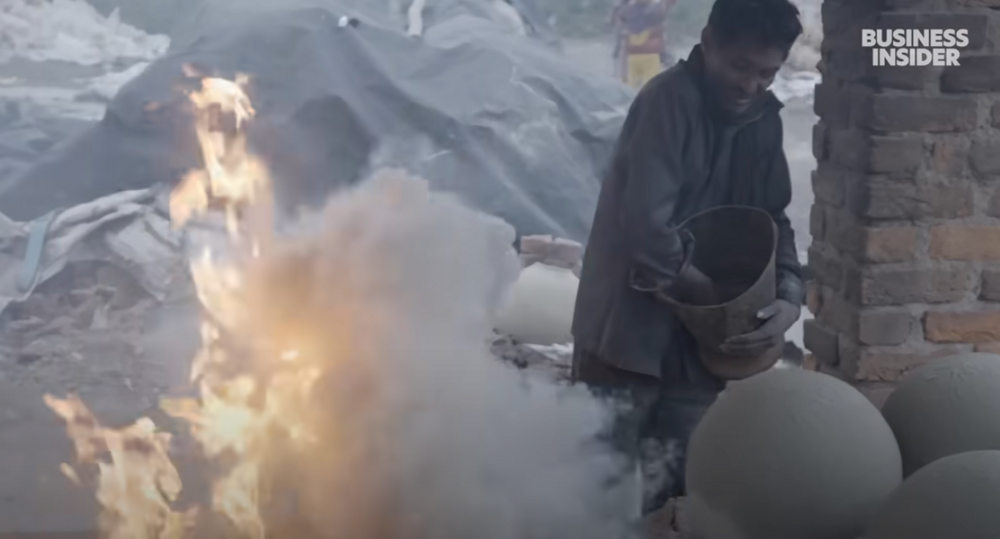
Black salt is mined not in the fields, but in a thousand-degree hotbed, which is no less dangerous and destructive for workers. And according to the ancient Indian tradition, there are no security measures or human protection. 
From an Indian report about black salt mining
In order to obtain namak kala (black salt), you need a homemade oven heated to 1000 degrees. Of course, such temperatures destroy the furnace at least once a year, burning workers, but it is still restored. 
Like this, right with your face into the oven and the tires, oh good, then you’ll breathe out black air like a dragon
The stove is heated with cow dung, and when there is not enough manure, burning bicycle tires are used. The most expensive production is on diesel fuel, when there are not enough tires.
This kiln is then filled with round pots filled with raw salt from Lake Sambhar (India's largest salt lake) mixed with crushed plants and fruits. The flavor of this burnt mixture is what makes black salt taste so unique. 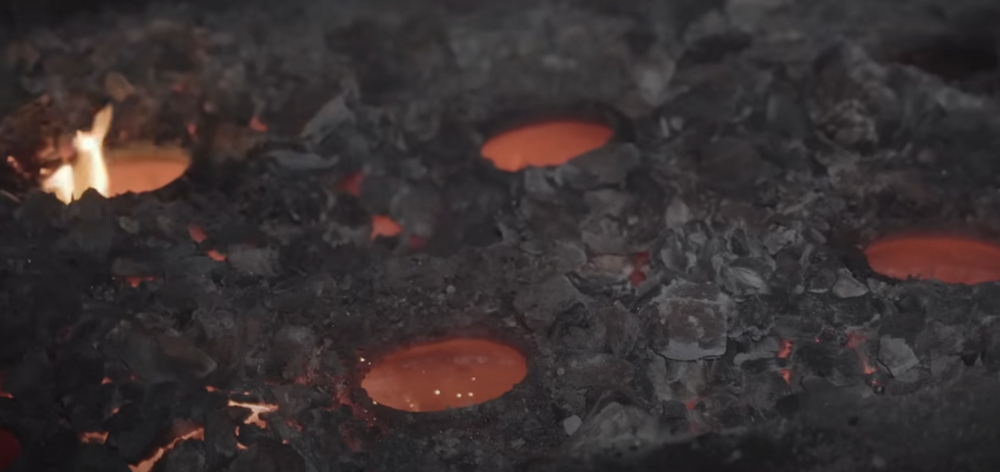
These are not craters in hell, these are the necks of pots of black salt sunk in tires.
Because salt gets incredibly hot, it should not be touched while cooking. At this semi-legal factory there are many men who have a work injury - a salt burn.
Since one batch of black salt takes 24 hours to prepare, employees stay awake for the entire cycle. Falling on a hot stove or being burned by steam is not uncommon here - you fall asleep standing up and you're ready. 
They take out these slides and check how everything is sintered.
The pots of baked salt mixture are pulled out at three in the morning. One pot weighs 35 kilograms, it needs to be lifted and broken. After all, it was sintered so tightly under a temperature of 1000 degrees with salt that they became one.
There are no fools among Indians
And the black pieces of their very center are the black salt kala namak. It is not ground into grains; it is sold immediately as sintered stones. The larger the piece, the more expensive it is - after all, this is proof not of a fake, but of a real salt stone. 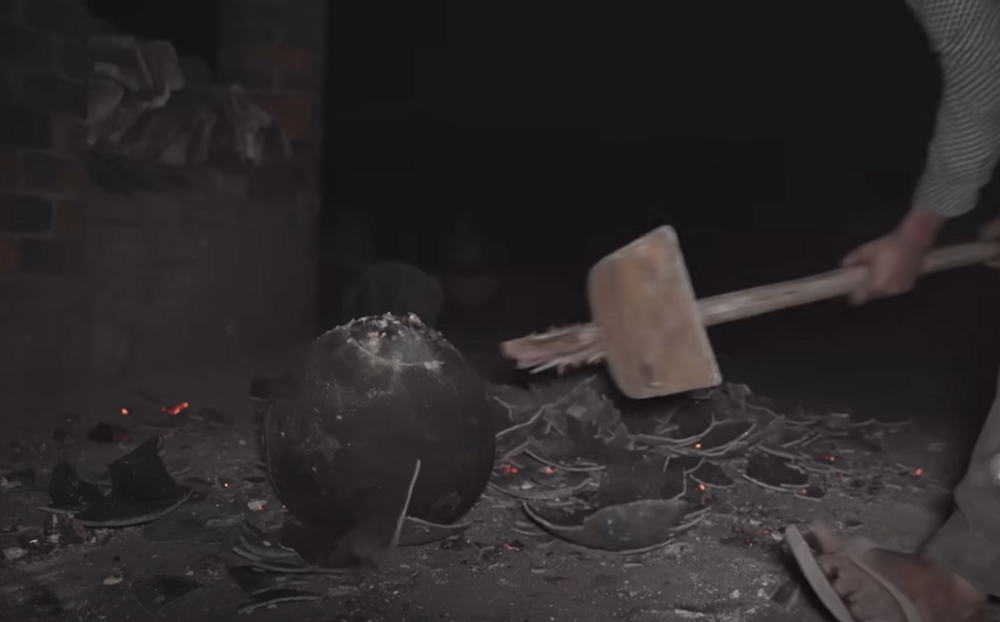
While it’s hot, the pot is broken like this with a hoe with bare hands. AND BARE FEET
Moreover, if you start grinding stones in a mortar, the salt will separate into granules from the baked spices and turn white again. Then traders will doubt whether you are selling them an ordinary mixture that has not been hardened in pots!?
Now the black salt factory is on the verge of closing, although over the years the demand for this spice has only been growing. And do you know why? Labor shortage! You can work for pennies without the danger of getting burned by a thousand-degree oven or salt, people have become picky! The conditions there are such that even Indians are scared. That is, you understand how dangerous they are. 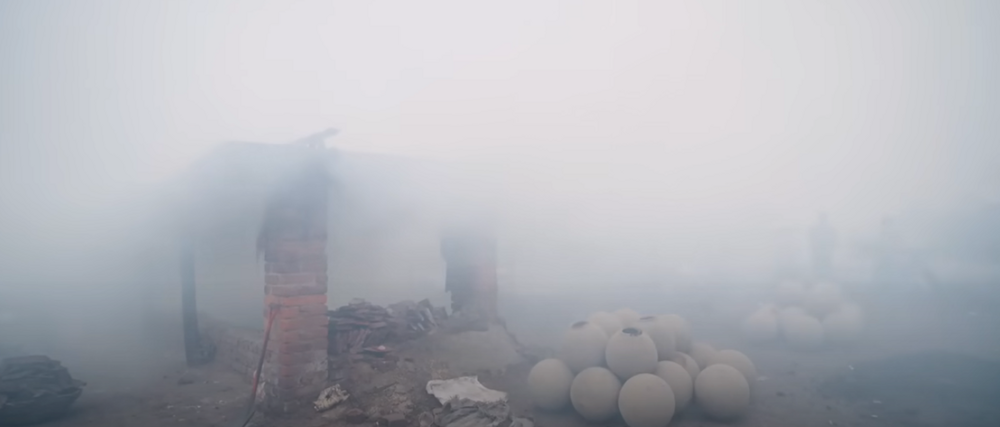
Workers remember where everything is located in the factory by touch, go and don’t fall into the burning tires...
But he cannot modernize production, and how? This is a craft that was passed down from father to son. The current owner simply has not studied and does not have the education to know that there are other stoves and other technologies. And they are not affordable for a manual factory. 
By the way, this is how funny they seal it - the plastic packaging is melted on a hot stove
Will there be no more black salt soon? It will, but it will be much more expensive. Probably, some large company will buy the factory or build its own, receiving permission to extract salt from Lake Sambhar. 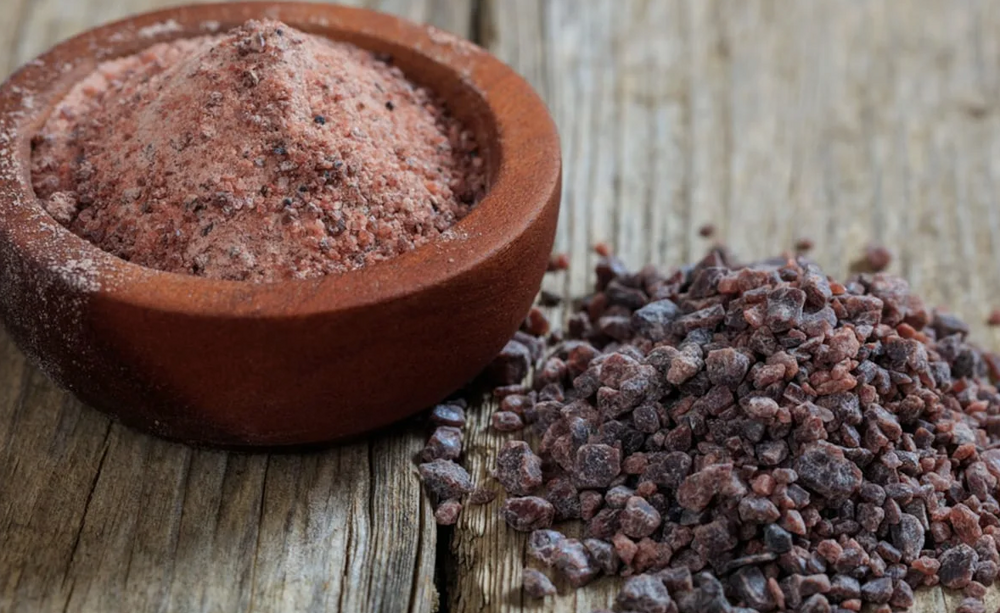
Have you ever seen black salt like this?
I don’t use black salt, I don’t see any unique taste in it, just a mixture of spices, you can mix your own mixture. And you?






















